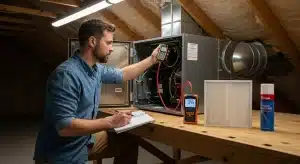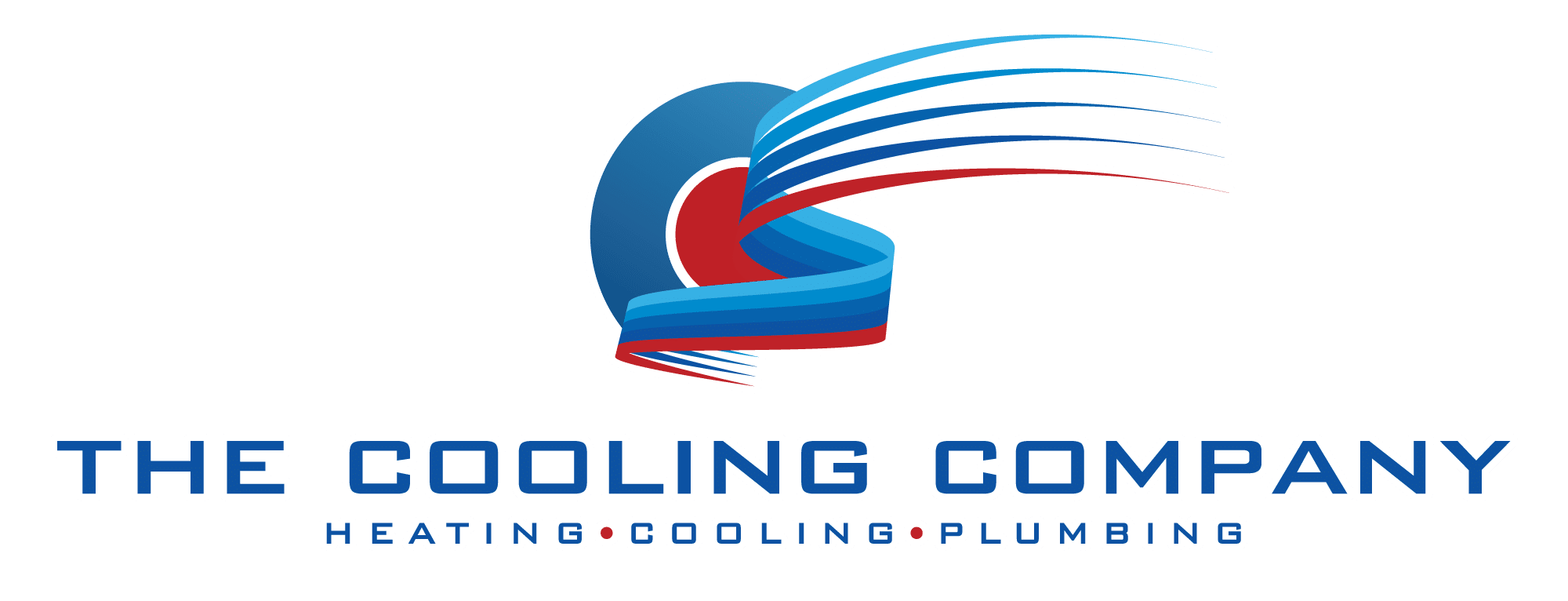
When Las Vegas temperatures soar past 100 °F, weak airflow from your vents can turn your home into an unbearable oven. Restoring robust airflow not only brings comfort but protects your HVAC investment, improves indoor air quality, and reduces energy bills. In this comprehensive guide—now expanded with real-world case studies, advanced measurement techniques, and deep technical insights—you’ll discover:
- How to measure and benchmark your airflow against industry standards
- Seven primary causes of weak airflow and detailed fixes
- DIY troubleshooting steps, from filter swaps to static-pressure tests
- Advanced diagnostics, including Pitot-tube and manometer methods
- Professional repair & maintenance solutions—with cost ranges
- Preventative maintenance schedules to keep airflow optimal year-round
- Local Las Vegas considerations: monsoon dust, attic temperatures, rebate programs
- Vetting contractors, avoiding common pitfalls, and ensuring transparent pricing
If you want a broad symptom-based playbook before diving into specifics, begin with our AC Troubleshooting: The Ultimate Homeowner’s Guide.
How Strong Should Your AC Airflow Be?
Proper airflow is critical. Most residential systems are designed for 350–450 CFM per ton of cooling. Here’s how to gauge yours:
Measuring CFM with an Anemometer
An anemometer measures airflow velocity (feet per minute, FPM). To calculate CFM at a register:
- Measure the width and height of the register to get area in square feet.
- Place the anemometer sensor in the center of the register and record the average FPM.
- Multiply FPM by register area to get CFM.
For example, a 3″×10″ register equals 2.5 ft². At 1 300 FPM, the CFM is 1 300 × 2.5 = 3 250 CFM total, or 325 CFM per ton on a 10,000 BTU (1 ton) system. Consistent readings below 350 CFM per ton indicate restricted airflow.
Pitot Tube & Manometer Technique
HVAC professionals often use a Pitot tube and manometer to measure both velocity pressure and static pressure. The Pitot tube samples airflow dynamic pressure, while the manometer gauges static pressure difference between supply and return. Ideal total external static pressure is ≤ 0.5 in. w.c., ensuring your system isn’t choking on resistance.
Static-pressure imbalances not only reduce airflow but can also shorten equipment life and raise energy consumption.
Perceived Airflow & Comfort Index
Beyond numbers, perceived airflow matters. You should feel a solid gust strong enough to flutter a thin piece of paper held an inch from the register. Weak or uneven airflow creates hot and cold spots, forcing your thermostat to run longer and driving up bills.
For best practices on duct sealing and airflow optimization, see the ENERGY STAR® Ductwork Sealing Guidelines.
Common Causes of Weak Airflow
Weak airflow can stem from multiple issues. We’ll explore each cause in depth, offering clear diagnosis and fixes.
Clogged or Dirty Air Filters
Symptoms: Reduced CFM, rising dust levels, longer run-times.
Cause: Filters trap dust, pollen, and pet hair. An overloaded filter adds significant static pressure—often >0.3 in. w.c.—starving the blower.
Fix: Replace 1″ fiberglass filters every 30 days; upgrade to 4″ media or MERV-13 pleated filters every 90 days. Larger filters slow airflow less, extending life and improving filtration.
Pro Tip: Install a pressure-drop gauge across the filter housing; replace when pressure exceeds 0.3 in. w.c. Learn more about MERV ratings at Understanding MERV® Ratings.
Frozen or Dirty Evaporator Coils
Symptoms: Ice on coils or drain pan, water leaks, musty odors.
Cause: Restricted airflow or low refrigerant lets coils dip below freezing, accumulating ice that blocks airflow and heat exchange.
Fix:
- Power off the system and let all ice melt.
- Replace or clean the filter.
- Clean coils with a no-rinse, foaming coil cleaner.
- Restore power and monitor for refreezing.
If frosting persists, schedule a refrigerant charge and leak test. For detailed coil maintenance, see Why Does My AC Keep Freezing Up? and the DOE freeze-protection guide.
Crushed or Disconnected Flex Ducts
Symptoms: Weak airflow in specific rooms; gurgling, flapping sounds.
Cause: Flex ducts are vulnerable to kinking, crushing against joists, or detaching from collars.
Fix: Inspect attic or crawlspace runs—straighten kinks, secure joints with foil tape or duct straps, and ensure proper sloping toward the plenum. Follow NEBB airflow-balancing standards for professional best practices.
Closed, Misadjusted, or Faulty Dampers
Symptoms: Entire area(s) lose airflow despite open registers.
Cause: Manual dampers left closed or motorized dampers in zone systems failing to open properly.
Fix: Locate manual lever dampers near the plenum; verify open position. For motorized dampers, test thermostat control signals and actuator response. Replace stuck or failed dampers/actuators as needed.
Blower Motor & Fan Issues
Symptoms: Humming, squealing, or silent blower; uneven airflow across registers.
Cause: Dust-clogged squirrel-cage fan, weakened start/run capacitor, or worn PSC bearings.
Fix:
- Shut off power at the breaker.
- Remove blower assembly access panel.
- Vacuum or brush away dust from the wheel and housing.
- Test capacitor microfarads; replace if ±6% off rating.
- If motor amperage exceeds nameplate spec or wheel binds, replace the motor.
See AC Blower Motor Replacement: 5 Signs It’s Time for HVAC Maintenance for full motor-diagnosis tips.
Leaky or Improperly Sealed Ductwork
Symptoms: Hot attic air entraining into supply, high static readings, uneven temperature zones.
Cause: Gaps at takeoffs, mitered corners, and trunk lines leak conditioned air into attics or crawlspaces.
Fix: Seal leaks with mastic or UL-approved foil tape. Insulate ducts in unconditioned spaces to prevent conduction losses and condensation. For IAQ and sealing best practices, consult the EPA duct-sealing guidelines.
Obstructed Return Vents or Furnishings
Symptoms: All-house weak airflow; blower runs longer.
Cause: Blocked returns due to furniture, curtains, or decorative covers.
Fix: Clear return grilles and ensure no obstructions within 3 ft. of the inlet. Replace restrictive decorative screens with high-flow grilles.
Step-By-Step DIY Troubleshooting
Follow these steps in order to pinpoint and fix common airflow issues:
- Replace & Monitor Filters: Install a fresh pleated filter; note immediate airflow change.
- Inspect Evaporator Coil: Remove the access panel; clean or defrost as needed.
- Clear Registers: Fully open supply and return vents; remove blockages.
- Adjust Dampers: Manually cycle zone dampers fully closed to open.
- Straighten Flex Ducts: Eliminate kinks and re-secure connections.
- Test Blower Engagement: Set thermostat to “Fan On”; listen and feel for airflow.
- Power-Cycle: Shut breaker for 60 seconds to clear control-board faults.
Advanced Diagnostics & Measurements
- Static-Pressure Testing: Use a Pitot and manometer to read supply vs. return static; ideal ≤ 0.5 in. w.c.
- Blower Motor Amp Draw: Clamp meter on motor leads; compare to nameplate amps.
- Capacitor µF Test: Capacitance meter checks start/run capacitor accuracy.
- Refrigerant Pressure Checks: EPA-certified techs measure high/low side pressures to rule out charge issues.
For in-depth technical guidance, refer to the NIST guide to refrigeration & AC systems.
Repair & Maintenance Solutions
- Filter Upgrades: Move to 4″ media or MERV-13 for extended life and lower pressure drop.
- Professional Coil Cleaning: Annual service removes grime, prevents freeze, and restores heat exchange.
- Duct Sealing & Insulation: Seal leaks and add R-8 insulation in unconditioned spaces per ENERGY STAR® protocols.
- Blower Motor Service: Clean, lubricate, test capacitor, or replace motor as indicated by diagnostics.
- Damper Calibration: Rebalance zones for uniform airflow distribution.
- Certified Duct Cleaning: Use NADCA-certified professionals to remove dust buildup without damaging ducts.
When to Call a Professional
If you’ve exhausted DIY steps, or if you encounter any of these signs, contact a licensed HVAC contractor:
- Persistent coil icing despite cleaning
- Blower chasing breaker trips or humming under load
- Major duct rerouting in walls or ceilings
- Suspected refrigerant leaks (hissing, oily residue)
- Unsafe electrical or gas‐line proximity
Preventative Maintenance Checklist
- Quarterly filter swaps and visual duct inspections
- Biannual coil & blower tune-ups per ASHRAE’s maintenance manual
- Annual duct-leak testing and sealing
- Seasonal thermostat calibration & damper exercise
- Record readings—static pressure, motor amps, run-times—for trend analysis
Local Las Vegas Considerations
Dust & Monsoon Seasons: Storms drive fine dust into your attic and ducts. Install pre-filters and consider electrostatic or UV purifiers to keep dust off coils and wheels.
Attic Temperatures: Roof decks exceed 150 °F; verify blower cabinet’s ambient-temperature rating (≥ 140 °F). Add radiant-barrier foil or attic fans to lower attic heat.
Rebate & Financing Programs: Many utilities offer rebates on ECM motor upgrades and duct sealing. NV Energy and local contractors often provide 0 % financing for HVAC improvements.
Next Steps
Weak airflow doesn’t have to mean sweltering summers. By layering basic DIY fixes, advanced diagnostics, and professional maintenance, you can restore strong, even airflow, improve comfort, and optimize energy efficiency. For transparent, no-surprise repair estimates and expert service, visit our AC Repair Services in Las Vegas page and book your appointment today.



